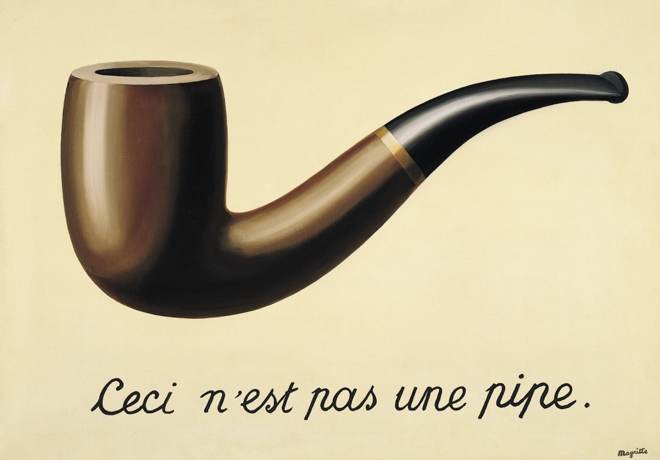Semiotics of Gender-Critical Feminists
Image: The Treachery of Images, Painting by René Magritte

Painting by René Magritte

Sourced from: https://twitter.com/TatsuyaIshida9
Semiotics is concerned with meaning: how representation – through language, images and objects – generates meaning. It also contributes to the processes by which we comprehend or attribute meaning (Curtin, B. 2016). In semiotics, ‘signs’ may be anything from which meanings are generated. Every sign is composed of:
* a ‘signifier’ – the form which the sign takes; and
(Chander D. 1994)
* the ‘signified’ – the concept it represents.
In Tatsuya Ishida’s comic, the artist utilises language and images to communicate transgenderism as a men’s sexual rights movement. This is made apparent by the artist’s Twitter feed, where the comic was sourced. It is important to consider the context in which a sign is encoded. The artist is a self-acclaimed ‘Gender critical feminist, which is a contemporary ideology. In Gender-critical feminists’ dominant reading, there is a sharp distinction between sex, as a biological reality, and gender, as the social construction of sex. The comic, therefore, uses signs through icons, symbols and indexes to convey a specific meaning.
Semiotic analysis acknowledges the individual’s position, or role, in terms of a challenge to any notion of fixed, unitary or universal meaning (Fiske, John and Jenkins, Henry 2010). Therefore subjectivity can actively interact with the image or object. A significant way that subjectivity is acknowledged is in the fact that our perception, or reading, of images and objects, can be revealed as socially conditioned (Mambrol N. 2020). Ishida’s comic is dynamic, resulting in complex inter-relationships between the individual (the artist and the responder, respectively), the image (the comic) and other factors such as culture and society (Transgender debates). This process is simplified as a signifier encoding a message and an audience decoding the signified message.
Theorist Daniel Chandler describes and distinguishes ‘iconic’, ‘symbolic’ and ‘indexical’ signs as:
* Icons – represent the signified by physically resembling it.
(Chandler D. 1994)
* Symbols – have a conventionalised relation between signifier and signified.
* Indexes – represent an inherent relationship between the signifier and signified, often culturally specific.
Central to semiotic analysis, in this respect, is the recognition of how visual and material culture is coded; the social conventions that link signs with meanings (Curtin B. 2016). The subject matter of Ishida’s comic is contemporary, topical and political, revealing the artist’s perception of Trans women as predatory (Libguides 2023). This is shown through the signs of the gender-ambiguous figure, noted as a ‘gender expansive person’. Despite being classified as a person, the figure is given tentacles. Here, the signifier used is words and images. These words and images are symbols that signify dehumanising qualities. The connotations of which highlight the perceptions of ‘monster’, ‘mutilation’, and ‘predator’ held by gender-critical feminists towards Transgender individuals.
In my own oppositional reading of Ishida’s complex image, gender-critical feminists have made mistakes:
- Assuming or arguing that only cis women need to be protected by women-only spaces
- By stating that trans women’s socialisation is similar to cis men’s.
- By not taking gender identity seriously as a factor that determines who counts as a woman.
Chandler, D. (1994) Semiotics for Beginners. Available at: https://web.pdx.edu/~singlem/coursesite/begsem.html Curtin, B. (2016) Semiotics and Visual Representation [Preprint]. Available at: https://www.arch.chula.ac.th/ejournal/files/article/lJjpgMx2iiSun103202.pd Fiske, J. and Jenkins, H. (2010) Introduction to Communication Studies: 3rd Edition. Routledge, London. pp. 80-86 (semiotics and myths) Available at: https://doi.org/10.4324/97802038373 Libguides UFV: Equity, diversity and inclusion E.D.I.: Home (2023) Available at: https://libguides.ufv.ca/c.php?g=724801&p=5233401 Mambrol, N. (2020) Analysis of Stuart Hall's encoding/decoding, Literary Theory and Criticism. Available at: https://literariness.org/2020/11/07/analysis-of-stuart-halls-encoding-decoding/




Itís nearly impossible to find educated people in this particular subject, however, you seem like you know what youíre talking about! Thanks